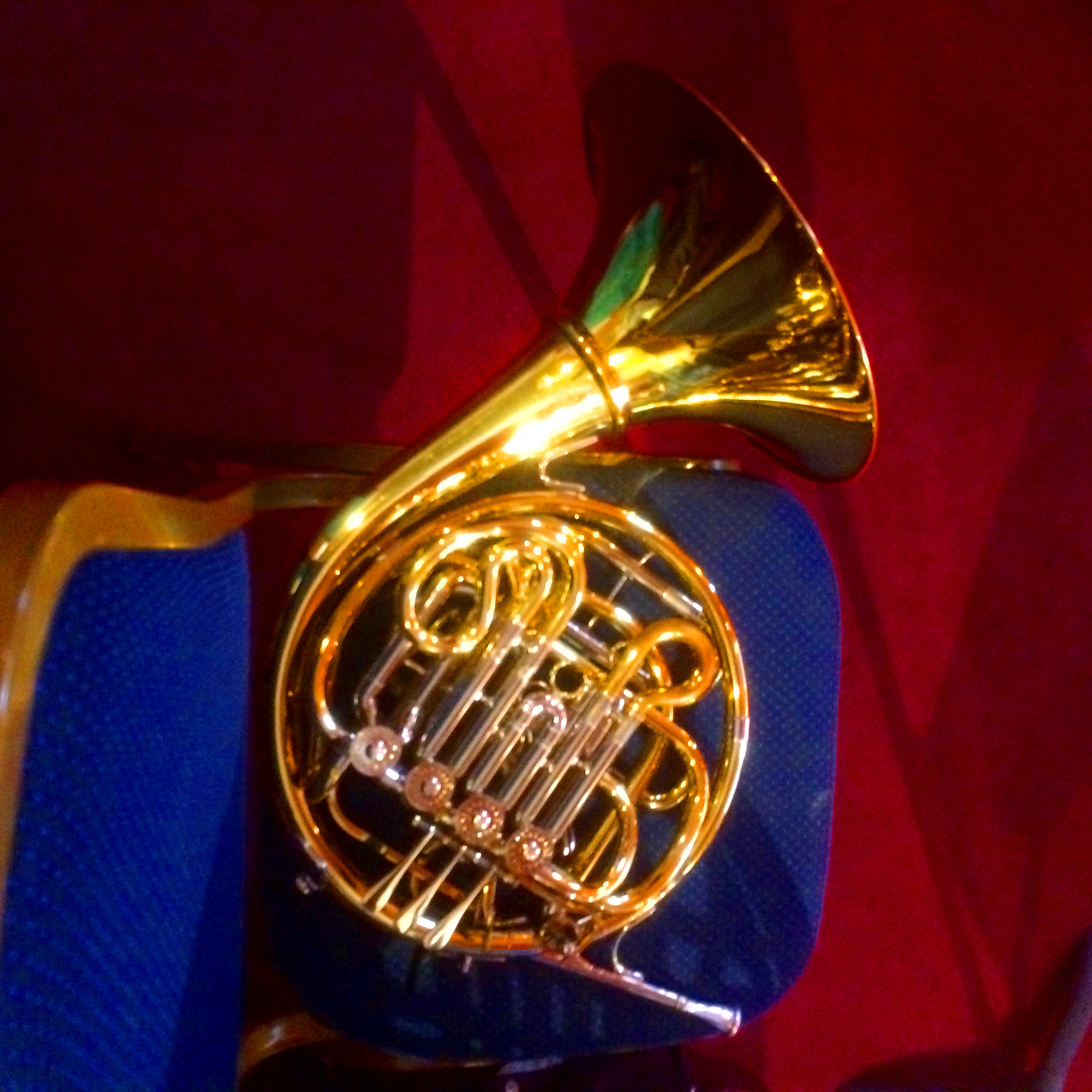If you are preparing for an audition, whether it is for college or an ensemble, you are probably digging into solo repertoire. For the French horn, there are a few significant pieces that should be at the top of everyone’s list to prepare. In this article, we will explore five French horn solos (not in a particular order) that directors commonly pick and are frequently found on audition lists. Almost all of these pieces were written for French horn and orchestra, but all have arrangements for horn and piano available for purchase.
Richard Strauss’s Horn Concerto No. 1 in E-flat Major.
This famous concerto is one of two works for solo French horn and rather short compared to Strauss’s other concerti for oboe and violin. Premiered in 1885, the piece was written for Richard’s father, Franz Strauss, who was the principal French horn player of the Munich Court Orchestra (although Franz did not premier the piece). Because Richard grew up hearing the French horn played by his father, it made sense for him to compose two concerti for the instrument. Richard’s father was also known to be a stubborn conservative when it came to music, which explains why this first horn concerto sounds quite traditional compared to his other famous works.
The piece is heroic in character, beginning and ending triumphantly, and although the slow section comes without a pause, it overall follows the normal three-movement structure of a concerto. What is unique, however, is how the horn introduces the opening heroic theme with the orchestra entering later with a celebratory repeat of that theme. Typically, the orchestra is the first to present the theme in the first movement, then the soloists enters with its own version before proceeding to development and recapitulation.
Strauss’s first French horn concerto is considered one of the hardest in the repertoire, according to Brittanica and other sources, since it spans both ends of the horn’s range. Franz Strauss was intending to premier the piece, but passed the honor onto Gustav Leinhos after declaring “the numerous high notes too risky.” (Brittanica). Notice that Franz declined for technical reasons, not musical, which speaks for the music. Franz was notorious for criticizing the modernism of Richard’s compositions. After the first performance, Strauss’s French horn Concerto No. 1 became one of the most popular and frequently-played solo horn pieces in the twentieth century.
Franz Strauss's Horn Concerto, Op.8
Second, since we just talked about Richard Strauss, it is appropriate to discuss the French horn concerto by his father, Franz Strauss.
As mentioned earlier, Franz Strauss was a prominent horn player in his day, and he wrote only one concerto for French horn. In contrast to Richard Strauss’s horn concerto that stretched the performer’s technical ability, Franz’s focus is more on tone and melodic phrasing. Franz was known for his unmatched French horn tone, so it is no surprise that his concerto presents challenges in that regard. The difference in French horn development might also have contributed to the contrasting styles. Franz’s concerto written in 1865 was for an instrument not as technically developed as the French horn in Richard’s day. In fact, as keys and tubes were added to the French horn to expand its capacity, Richard famously tested the limits of these new instruments in his tone poems and large symphonic works.
Similar to the first two movements of Richard’s first horn concerto, Franz’s concerto has no breaks or pauses between any of its three sections. It still has three distinct movements, marked by tempo changes, and perhaps the idea influenced Richard’s decision in his lack of break between his first and second movements. Though it is a great French horn concerto, Franz Strauss’s piece never achieved the widespread popularity as Richard’s a generation later. However, it has recently been making it on the repertoire list for honors ensemble auditions.
Morceau de concert by Camille Saint-Saens
Another important solo piece for the French horn is Morceau de concert by Camille Saint-Saens, written in 1887.
Literally translated to a “concertpiece,” this solo work for French horn was just one of many small-scale concertos Saint-Saens wrote for various instruments. It follows the three-movement format like the previous two examples, but more condensed. Averaging about nine minutes in length, Morceau de concert does not use any breaks between movements and despite there being three sections to the piece, there are only two tempo markings: “Allegro moderato” and “Allegro non troppo.”
The first movement is a theme and variations with the theme presented by the French horn solo after a brief orchestral introduction. The second adagio section interrupts these variations with a lyrical melody, followed by another abrupt transition into the final, lively section. Like the Richard Strauss concerto, Morceau de concert sought to exploit the technical capabilities of the French horn. As the video showed, Saint-Saens’s solo includes a multitude of fast passages and arpeggios that test the range of the instrument. This piece was also composed in the late 1800’s, like Strauss’s first horn concerto, and there were plenty of mechanical modifications done to the horn to exploit. Although it features many technical passages, Morceau de concert maintains a musical line that makes it a joy to play and a staple in the audition prep list.
Mozart’s Horn Concerto No. 3 in E-flat Major.
Wolfgang Amadeus Mozart wrote four concertos and a Concert Rondo for the French horn, all of them in the key of E-flat major except for the first one, which is in D major. In reality, horn concertos 2-4 resemble each other in many ways, I just personally like number 3 the best. On most audition lists, you will find either the second or third concerto. Mozart’s third concerto for French horn was written in 1787 and consists of three movements: Allegro, Romance (Larghetto), and Allegro, the final allegro being in 6/8 time. Like all four of Mozart’s horn concertos, the third one was written for Joseph Leutgeb, a French horn player and friend of Mozart. Leutgeb was at one time a member of the Salzburg court orchestra, but later moved to Vienna to open a cheese shop.
Unlike the previous solos, Mozart’s concerto was written for the valveless or natural horn. All of Mozart’s concertos are a testament to his artistry, but they also contain some challenging passages, especially for a natural horn. On a natural horn, players cannot simply press keys to change notes or keys (in the case of double French horns). Instead, players must use a combination of embouchure change and right hand placement to play different notes. To play in various keys, players would switch out different crooks. This could help explain why Mozart wrote most of his French horn concertos in E-flat major.
Like all of Mozart’s music, his third French horn concerto is one of the most pleasant to play and to hear. The technical passages sound more like playful melodies, and the lyrical beauty of the middle movement does not disappoint. Mozart is famous for his light, even flirtatious music, and this concerto is no exception, and is one of the most enjoyable solos to play on French horn.
Beethoven Sonata for Horn and Piano in F Major
Last but not least is the Beethoven Sonata for Horn and Piano in F Major, composed in 1800.
Of the solos discussed here, this is the only one originally written for French horn and piano, not orchestra. This piece is far from Beethoven’s most famous, but it is a great work nonetheless. Although this was composed for the natural horn like Mozart’s solos (as you can hear in the recording above), Beethoven’s more aggressive temperament comes through in comparison to the lighthearted Mozart. You can spot the difference just in the stately, opening French horn fanfare that already exploits the wide range of the instrument. In Beethoven’s sonata, the piano plays a more important role and is sometimes featured more than the French horn. This could be a result of Beethoven’s claim to have improvised the piano part at the premier, which was a great success.
Beethoven’s horn sonata follows a three-movement format rather than four, as is typical of his piano solo sonatas. The first movement, Allegro moderato, is based on the horn call mentioned earlier that is gradually elaborated with chromatic movement. The inner Poco adagio, quasi andante movement is quite brief, quickly moving onto the exciting Rondo. The third movement features a particularly exhilarating passage in the last several bars that create a dramatic rush to the finish. Despite Beethoven supposedly only taking a day to write it, his Sonata for Horn and Piano is a thrill to play and will likely show up on audition lists.




